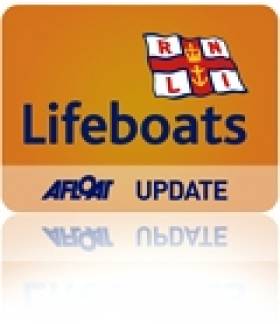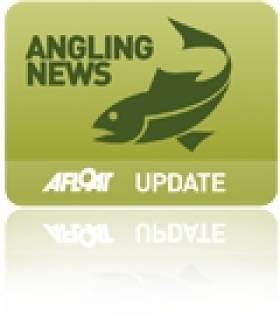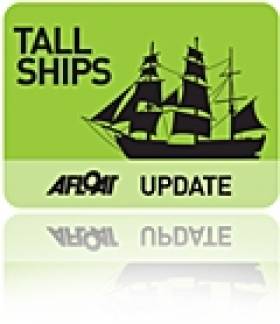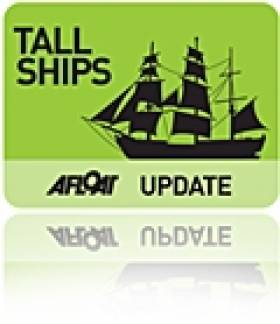Displaying items by tag: Keith Barry
Keith Barry 'Brain Hacker' Supports RNLI at Angling Exhibition
#brainhacker – Celebrity 'Brainhacker' Keith Barry shows his support for the RNLI at the recent angling exhibition (L-R) George Duffy (Howth RNLI), John McKenna (Lifeboat Sea Safety Officer, Howth RNLI), Keith Barry and Alan Gielty (Achill Island RNLI) pictured at the RNLI stand at the Ireland Angling 2014 exhibition in Dublin (15 Feb 2014). Over 300 people visited the stand to get advice about staying safe at sea and how to properly maintain their lifejackets.
Out of the 18 lifejackets brought to the Lifejacket Clinic, 14 had out-of-date triggers or salt tablets and one had been fired.
Getting Kids Hooked On the Magic of Angling
#Angling - Ireland’s top mentalist - and passionate angler - Keith Barry is encouraging kids of all ages to get hooked on angling during Fisheries Awareness Week 2013.
Angling events for newcomers to the sport will continue at coastal and inland venues across the country till Sunday 19 May.
This is the fifth year of Fisheries Awareness Week, with 50 events in 16 counties dedicated to sea angling, pike angling, trout angling, coarse angling and salmon angling as well as family fun days, school days and more.
Minister Fergus O’Dowd heaped praise on Keith Barry for his involvement in the week. “It’s no surprise Keith loves angling as who could fail to be hypnotised by the magic of this absorbing activity?” he said.
“Keith has a real love of angling and a genuine interest in the outdoors. This passion really shines through when he is sharing is love of angling with the next generation.”
Fisheries Awareness Week aims to encourage youths and adults alike to take up the pastime of angling but also works with existing anglers to heighten their awareness of the environment.
The event is run by Inland Fisheries Ireland (IFI) in conjunction with fishing clubs, charter boat skippers and private fishery owners.
"Fisheries Awareness Week offers loads of opportunities for people, young and old, to get out on the water and go fishing," said IFI's Suzanne Campion. "Everyone from experts to complete novices are welcome but we hope that as a result of the week more people will take up angling as a pastime.”
Events are free and open to all, with family fun a priority. Check out events in your area by logging on to www.faw.ie.
'Ferry' to Headline Waterford Tall Ships
Looking ahead to the Waterford show, Bryan Ferry said,' I am delighted to be returning to perform in Ireland following Roxy Music's performance at
Electric Picnic last year'.
Ferry will perform on the festival's main stage at Bolton Street. On the same site of the following night, The Waterboys will be supported by Waterford's O Emperor. While on the 2 July the headline act will be the Sharon Shannon Show with special guests Damien Dempsey and Dessie O'Halloran.
The four-day maritime spectacle which runs to 3 July is set to host over 70 tallships, over 1,500 trainee sailors and an anticipated 500,000 visitors that are to throng the 'Noblest Quays in Europe' with the countdown to the festival edging closer to just 100 days.
Billed as the largest Irish festival event in 2011, the return of the Tall Ships for the second time to Ireland's oldest city, presents young Irish people to experience a once in a lifetime opportunity to set sail onboard a tall-ship.
The opportunity is open to those aged 16 or over by June 30, 2011 and are fit and active to be a trainee on the inaugural race leg from Waterford to Greenock (departing 3 July). For further information click here.
The festival is not just eagerly awaited by fans of all things maritime and musical but with a programme that is also to feature street theatre, culinary and craftwork 'villages' and firework displays.
Renowned street theatre company 'Spraoi' have commissioned almost 20 national and international street performance acts. In addition the award-winning illusionist, Keith Barry will perform another specially-commissioned piece at the launch on the afternoon of 30 June.
On the nautical front, highlights include the 'Crew Parade' on 1 July and ultimately culminating with the 'Parade of Sail' by the international fleet on 3 July. Asides the city quayside on the River Suir the Waterford estuary provides excellent viewing points, some at elevated sites.
Looking for further reading on Tall Ships in Ireland? Click the links below:
Click this link to read all our Tall Ships Stories on one handy page
Previewing Ireland's Tall Ships 2011 Season
Can Ireland Get a New Tall Ship?
- street theatre
- Waterford Estuary
- River Suir
- Ports and Shipping News
- The Waterboys
- Keith Barry
- Bryan Ferry
- Roxy Music
- Waterford Tall Ships Race Festival
- TallShips
- Electic Picnic
- Sharron Shannon
- Spraoi
- Crew Parade
- Parade of Sail
- SailTrainees
- Damien Dempsey
- Dessie O'Halloran
- Noblest Quays in Europe
- RaceLeg
- WaterfordGreenock
Waterford Tall Ships Plans Revealed
Waterford has unveiled its sailing plans to celebrate the arrival of the Tall Ships Race this summer.
The Irish Times reports that more than half a mllion people are expected to visit the city from 30 June to 3 July to see the majestic vessels - and they are set to be entertained by a variety of street events and live performances.
Sharon Shannon, The Waterboys and magician Keith Barry are among those lined up for the weekend's festivities.
Fáilte Ireland chair Redmond O’Donoghue compared the Tall Ships visit to the Volvo Ocean Race visits to Galway, and said it would be “a talking point for many years to come”.
A new multi-million euro jetty for Waterford Harbour designed to accommodate the ships will be ready in time for the race arrival.
The Irish Times has more on the story HERE.
Looking for further reading on Tall Ships in Ireland? Click the links below:
Click this link to read all our Tall Ships Stories on one handy page
Previewing Ireland's Tall Ships 2011 Season
Can Ireland Get a New Tall Ship?
































































